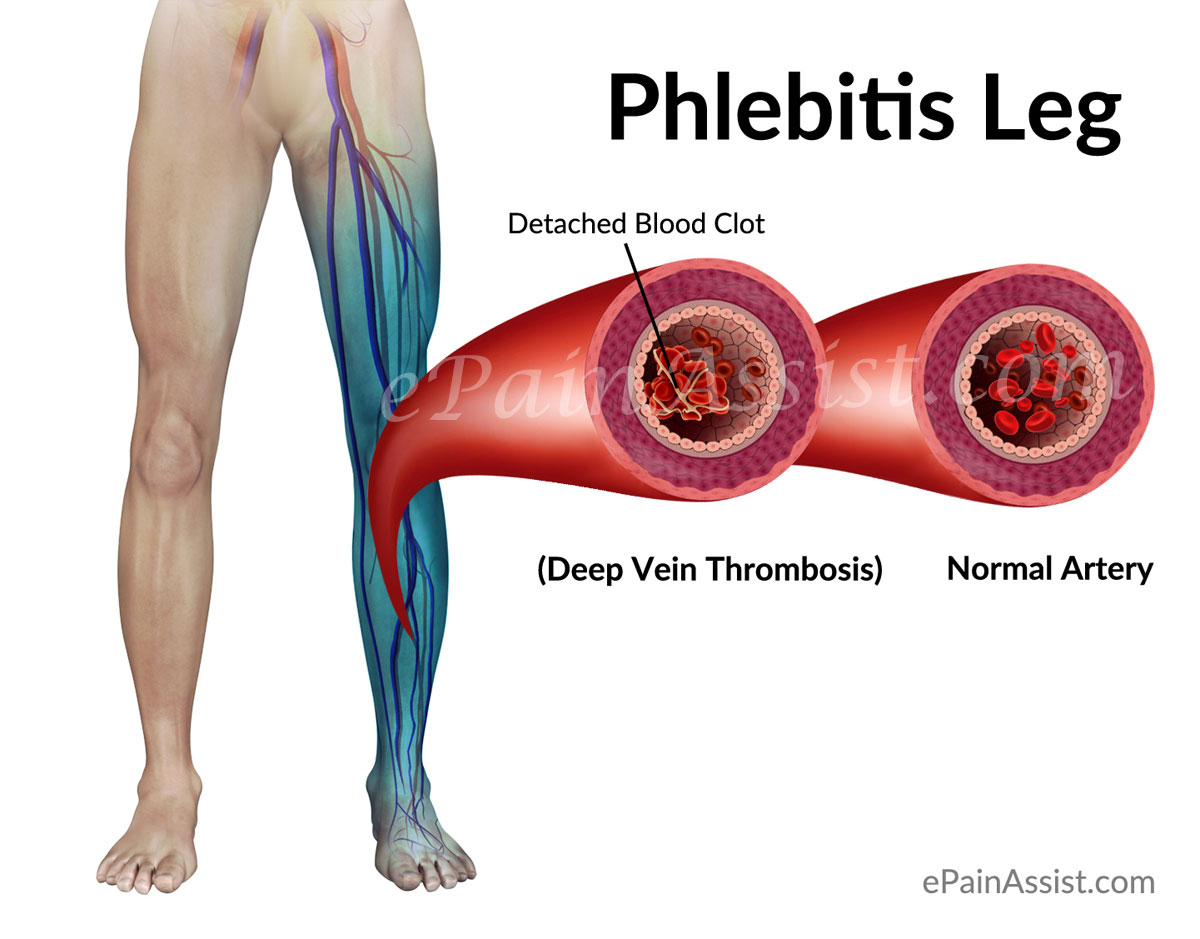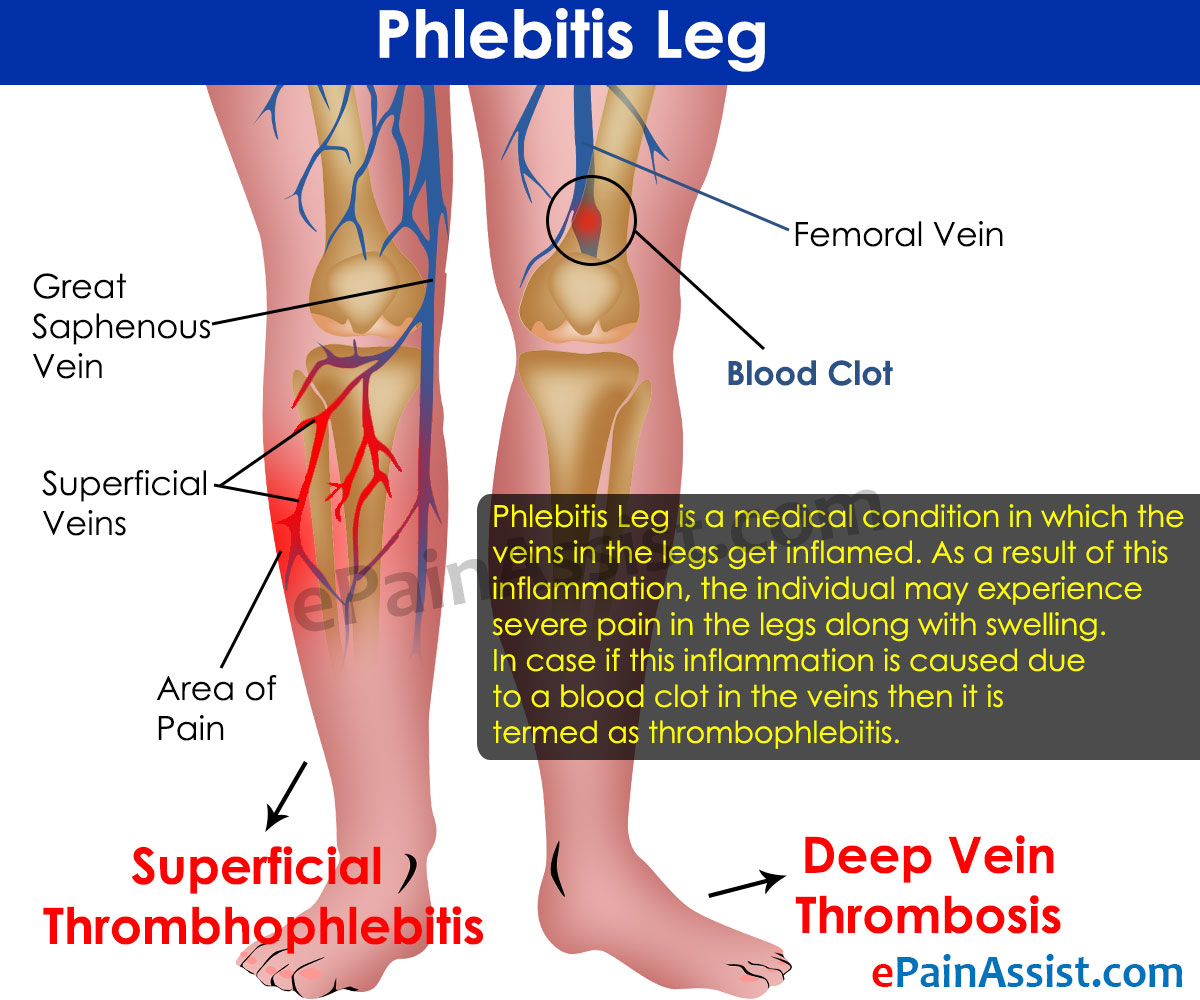What Is Phlebitis Leg?
Phlebitis Leg is a medical condition in which the veins in the legs get inflamed. As a result of this inflammation, the individual may experience severe pain in the legs along with swelling. In case if this inflammation is caused due to a blood clot in the veins then it is termed as thrombophlebitis. When looking at the anatomy, there are two types of veins in the legs which are the superficial veins which is present just below the skin and the deep veins. If there is inflammation of the superficial veins then it is called as superficial phlebitis and is a benign condition which usually resolves with use of compresses and antiinflammatories. In case if the deep veins of the legs get inflamed then more aggressive treatment may be required to treat the condition. Inflammation of the deep veins due to a blood clot is termed as deep vein thrombophlebitis or DVT which is quite a serious condition and needs emergent treatment. This clot may eventually travel to the lungs resulting in a potentially life threatening condition called pulmonary embolism.
What Causes Phlebitis Leg?
When talking about Phlebitis Leg, the superficial form of this disorder is caused due to any trauma or injury to the veins of the leg and the most common cause is the administration of an intravenous line in a patient which tends to irritate the vein. Varicose veins may also be a reason for superficial Leg Phlebitis. Some of the causes of DVT which may eventually result in Leg Phlebitis are:
- Long periods of inactivity such as being bedridden due to a medical condition or an accident
- Trauma to the veins resulting in blood clots
- Clotting disorders
- Being obese may also be a cause for formation of blood clots in the deep veins of the legs.
- Smoking also increases the risk for DVT
- Females who take birth control pills chronically may also be at risk for development of DVT and eventually Leg Phlebitis.
What Are The Symptoms Of Phlebitis Leg?
The primary symptom for Phlebitis Leg is the presence of an erythematous warm area along the superficial veins of the legs. This erythematous spot may then spread to form an area of erythema as the inflammation spreads along the vein. The affected area may become hot and there will be tenderness along with severe pain. Then, there will be a burning sensation. The symptoms tend to get better if the leg is elevated and worsens when the legs is lowered down. The symptoms are at its worst when first getting up out of bed. The patient may also develop fever in some cases. In case if the inflammation is caused due to insertion of a catheter then the main symptoms can be seen at the insertion site of the catheter.
In case if inflammation is present in the deep veins of the legs, then patient will have erythema, warmth and swelling along with severe pain in the legs. There is also bluish discoloration of the skin in the affected leg.
How Is Phlebitis Leg Diagnosed?
To begin with the treating physician will first conduct a detailed history taking in which the physician will inquire about any prior trauma to the leg which may have affected the veins adversely and may have caused the symptoms following which a detailed physical examination will be conducted to look at the affected area looking for areas of erythema, tenderness, and warmth. In majority of the cases, diagnosis of superficial Phlebitis Leg is made by these two methods and no further clinical studies are required.
In case there is a suspicion of a DVT then further studies may be required.
In order to identify a clot causing Leg Phlebitis then the following studies may need to be conducted:
- D-dimer Test: D-dimer is a protein fragment that is present in the blood when a blood clot disintegrates. Hence this test is done to identify the presence of a clot. If the test is normal then it proves that there is no clot present but this test can only certify the presence of a clot but not the exact location of a clot.
- Ultrasound: This can also be done in order to identify the presence of a clot or any obstruction of blood flow.
- Venography: In case if ultrasound is not decisive enough to identify the presence of a clot then another test called as venography can be performed which looks at the veins in detail and can pinpoint the presence of a clot.
How Is Phlebitis Leg Treated?
In cases of superficial Leg Phlebitis, the frontline treatment is just compression stockings and warm compresses along with use of antiinflammatories like Tylenol or ibuprofen. In case of an infection at the site of the inflammation then antibiotics will be required to eliminate the bacteria causing the infection.
In cases if DVT is the cause of Phlebitis Leg, then the DVT will have to be treated. This is done by using anticoagulants in order to prevent the DVT from advancing to pulmonary embolism. Initial treatment includes administration of injectable Lovenox. Coumadin is also administrated for treatment of DVT. These treatments mentioned above can be used to successfully treat Phlebitis Leg.


